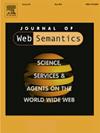使用SPARQL集合语义证明查询包含求解器规范的正确性
IF 3.1
3区 计算机科学
Q3 COMPUTER SCIENCE, ARTIFICIAL INTELLIGENCE
引用次数: 0
摘要
解决sparql查询包含问题对于验证和优化sparql查询至关重要。随着语义Web及其应用程序的日益普及,sparql查询包含解决方案面临着重大挑战:覆盖广泛的语言结构,实现高效率,并保证正确性。虽然语言的覆盖率和效率可以通过相关的基准测试来可靠地评估,但我们需要正式的正确性证明来确保工具的可靠性。在本文中,我们证明了SpeCS的正确性,SpeCS是一个高效的最先进的查询包含求解器,它支持对包含所有常用sparql语言结构的查询进行推理。我们概述了涵盖sparql语言最常见子集的集合语义,并给出了所有基本sparql概念的精确定义。我们将简要讨论SpeCS用于将查询包含问题简化为形式化逻辑框架的过程。我们证明了这个过程对于合取查询以及一些重要的非合取查询类(包含联合操作符、可选操作符和子查询的查询)都是健全和完整的。我们考虑了包容和包容两种形式的健全性和完备性。我们还讨论了由正确性证明驱动的求解器开发的优点。本文章由计算机程序翻译,如有差异,请以英文原文为准。
Proving correctness of the query containment solver SpeCS using SPARQL set semantics
Solving the sparql query containment problem is of fundamental importance for the verification and optimization of sparql queries. With the increasing popularity of the Semantic Web and its applications, sparql query containment solvers face significant challenges: covering a wide range of language constructs, achieving high efficiency, and guaranteeing correctness. While language coverage and efficiency can be reliably evaluated by testing with relevant benchmarks, we need formal proof of correctness to ensure the trustworthiness of a tool.
In this paper, we prove the correctness of SpeCS a highly efficient state-of-the-art query containment solver that supports reasoning about queries containing all commonly used sparql language constructs. We outline set semantics that cover the most common subset of the sparql language and give precise definitions of all fundamental sparql concepts. We briefly discuss the procedure used by SpeCS for reducing the query containment problem into a formal logical framework. We prove that this procedure is both sound and complete for conjunctive queries as well as for some important classes of non-conjunctive queries (queries containing the union operator, the optional operator, and subqueries). We consider soundness and completeness in both containment and subsumption forms. We also discuss the advantages of solver development driven by correctness proofs.
求助全文
通过发布文献求助,成功后即可免费获取论文全文。
去求助
来源期刊

Journal of Web Semantics
工程技术-计算机:人工智能
CiteScore
6.20
自引率
12.00%
发文量
22
审稿时长
14.6 weeks
期刊介绍:
The Journal of Web Semantics is an interdisciplinary journal based on research and applications of various subject areas that contribute to the development of a knowledge-intensive and intelligent service Web. These areas include: knowledge technologies, ontology, agents, databases and the semantic grid, obviously disciplines like information retrieval, language technology, human-computer interaction and knowledge discovery are of major relevance as well. All aspects of the Semantic Web development are covered. The publication of large-scale experiments and their analysis is also encouraged to clearly illustrate scenarios and methods that introduce semantics into existing Web interfaces, contents and services. The journal emphasizes the publication of papers that combine theories, methods and experiments from different subject areas in order to deliver innovative semantic methods and applications.
 求助内容:
求助内容: 应助结果提醒方式:
应助结果提醒方式:


